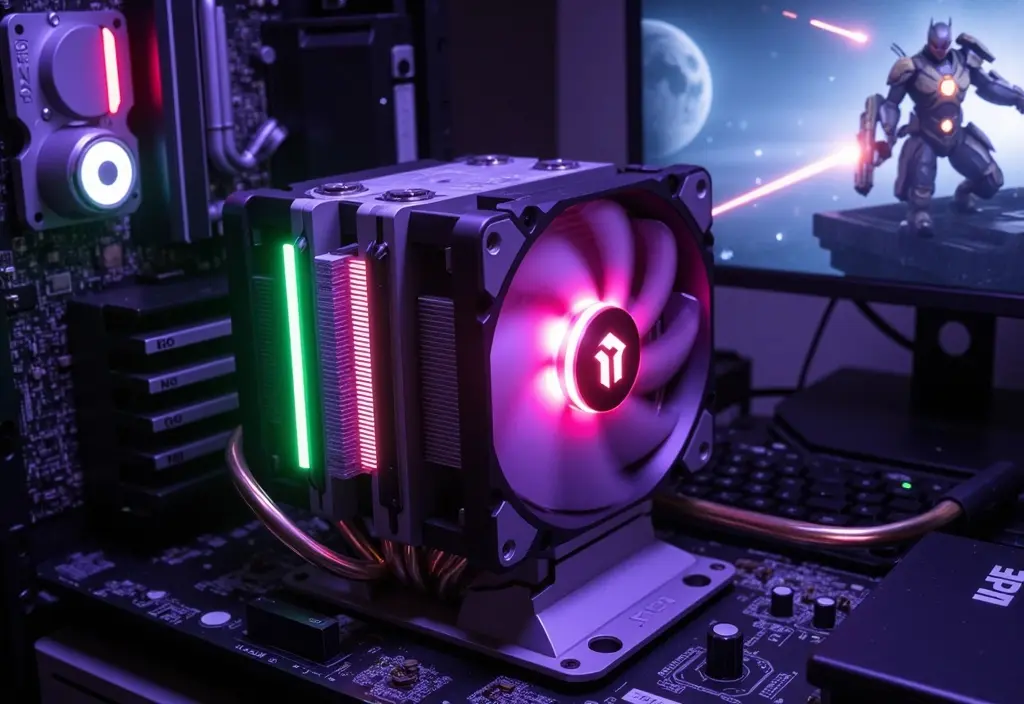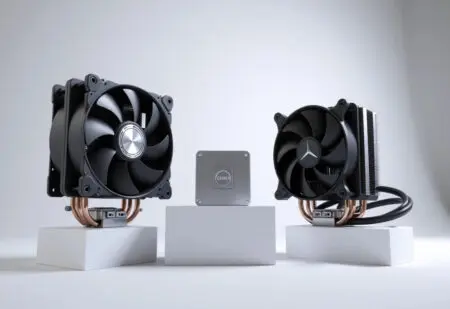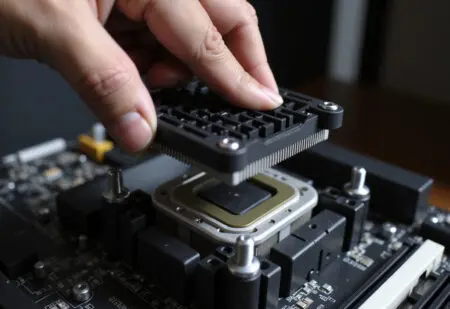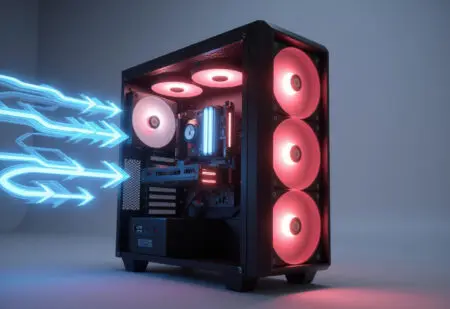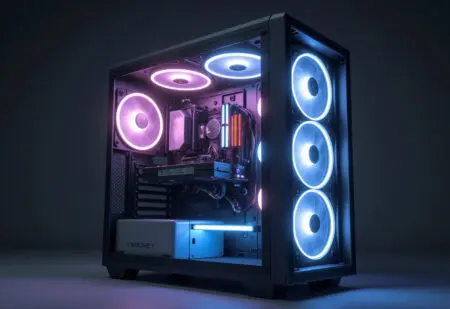The fans inside your PC begin to whine. Then, they scream. A blast of hot air pours from the case, and you can feel the heat on your leg. It’s the final circle. The championship is on the line. And your game stutters. Freezes for a half-second. That’s all it takes. You’re dead. It wasn’t your reflexes. It was your CPU, cooking itself and throttling back its power to survive. If that sounds all too familiar, then you’ve come to the right place to ask the most important question in PC building: what is the best CPU cooler for gaming?
It’s a simple question with a dizzyingly complex answer. Answering it can send you spiraling down a rabbit hole of brands, radiator sizes, and technical specs that would make an engineer’s head spin. But here’s the bottom line: your CPU cooler is one of the most vital parts of your rig. It’s what lets your processor stretch its legs and deliver the performance you paid a premium for. Choosing the right one isn’t just about stopping your PC from overheating. It’s about winning.
More in Hardware Category
ATX vs. Micro-ATX vs. Mini-ITX
What Are the Quietest PC Cases for Gaming
Key Takeaways
- There’s no single “best” cooler for everyone. The right choice hinges entirely on your specific CPU, the case you’re building in, and how much you want to spend.
- Good old-fashioned air coolers give you incredible bang for your buck. They’re ultra-reliable and powerful enough for the vast majority of gaming builds.
- All-in-One (AIO) liquid coolers pack the biggest punch in terms of raw cooling power, making them perfect for high-end CPUs that run hot. Plus, they look incredible.
- Don’t just look at performance charts. You have to consider if the cooler will physically fit, how loud it gets under pressure, and how much of a headache it is to install.
- The thermal paste you use and how you put it on is just as important as the cooler itself. A bad application can make a great cooler perform like a cheap one.
So, Why Can’t I Just Use the Cooler My CPU Came With?
That is the million-dollar question, isn’t it? It’s one I asked myself when I pieced together my first gaming PC years ago. Most CPUs you buy come with a “stock cooler” right in the box. It’s free. It works. Why on earth would you spend more money? For a little while, I didn’t. I proudly installed that flimsy little thing and fired up a game.
And it worked. For a while.
The moment of truth came during a long night of Apex Legends. My squad was in the final two, hiding behind a rock, the zone closing in. Every single frame mattered. Then, my game turned to sludge. It felt like my character was running through molasses. My PC, which had been humming along, now sounded like a vacuum cleaner. We lost. That night, I learned a brutal lesson about something called thermal throttling.
Think of thermal throttling as your CPU’s panic button. When it gets dangerously hot, it slams the brakes on its own performance to generate less heat and avoid permanent damage. A stock cooler is designed to be “just good enough” for browsing the web and maybe some very light gaming. It keeps the CPU from hitting that panic button under normal stress. But a heavy, sustained gaming session? That’s not normal stress. Using a stock cooler for serious gaming is like entering a sedan in a monster truck rally. It’s just not built for that kind of punishment.
Are We Talking About a Giant Metal Fin Stack or a Water-Filled Radiator?
Once you leave the stock cooler behind, you’ll find yourself at a crossroads. The world of CPU cooling is dominated by two major philosophies: traditional air coolers and the sleek, modern All-in-One (AIO) liquid coolers. Both are designed to pull heat off your processor, but they do it in completely different ways. This is usually the first big choice you have to make.
What’s the Real Deal with Air Coolers?
An air cooler is a triumph of simple, brute-force physics. You have a metal plate that sits on the CPU, with a bunch of copper pipes leading out of it. These pipes carry heat up to a huge stack of thin metal fins. A big fan strapped to the side blows air through those fins, carrying the heat away. Simple. Effective.
It’s an incredibly elegant system, and its simplicity is its biggest advantage.
- Built Like a Tank: There are very few moving parts. The only thing that can realistically fail is the fan, which you can replace for about ten bucks in five minutes. A top-tier air cooler can easily outlive the rest of your PC.
- Easy on the Wallet: Air coolers offer the best performance for your dollar, period. A great $40 air cooler can often go toe-to-toe with a $100 liquid cooler.
- Seriously Powerful: Don’t mistake “simple” for “weak.” The massive dual-tower air coolers from brands like Noctua and be quiet! can handle the hottest gaming CPUs on the market, performing right alongside many AIOs.
The main drawback? They can be massive. A big air cooler can sometimes cause clearance issues with tall RAM sticks or the side panel of your case.
How Exactly Do AIO Liquid Coolers Work Their Magic?
AIO liquid coolers are a bit more high-tech. Instead of dealing with heat right on top of the CPU, they move it somewhere else. A small block containing a pump sits on your CPU. This pump pushes a cooling liquid through a tube to a radiator, which you typically mount to the top or front of your case. Fans on that radiator blow the heat out of your PC, and the now-cool liquid cycles back to the pump to grab more heat.
This approach has some killer benefits.
- Ultimate Cooling Power: Liquid is just better at absorbing heat than air is. By moving that heat to a large radiator, AIOs can achieve lower temperatures, giving you more headroom for overclocking the most powerful CPUs.
- Clean Looks: AIOs create a much less cluttered look around your CPU socket. This is a massive plus for builders who want to show off their motherboard and RGB RAM through a glass side panel.
- Direct Heat Removal: They take the CPU’s heat and exhaust it directly outside the case, which can help keep all your other components a little cooler, too.
So what’s the catch? They cost more, and with a pump and sealed liquid, there are more things that could potentially (though rarely) go wrong.
Does a Bigger Cooler Always Mean Better Performance?
Generally, yes, but it’s not quite that simple. More size means more surface area. A larger air cooler’s fin stack or a larger AIO’s radiator can dissipate more heat. The key, however, is to match your cooler to your CPU. You need the right tool for the specific job.
Your mid-range Intel Core i5 or AMD Ryzen 5 CPU isn’t a tiny volcano. For gaming, it produces a manageable amount of heat. A solid mid-range air cooler or a 240mm AIO is plenty. But if you’re dropping big money on a top-tier Core i9 or Ryzen 9, especially if you plan to overclock it? You’re going to need the big guns. That means a massive dual-tower air cooler or a 280mm/360mm AIO to absorb and get rid of all that extra heat.
How Do I Know if a Cooler Will Even Fit in My Case?
This is the number one rookie mistake, and it is absolutely soul-crushing. I know because I’ve made it. I once got so excited by the glowing reviews for the legendary Noctua NH-D15 air cooler that I ordered one without a second thought. It arrived, I spent an hour carefully installing it, admiring my work. Then I went to put the side panel on my case. It wouldn’t close. The top of the cooler was sticking out by just a few millimeters. I had to tear it all down and send it back. I had forgotten to check one simple number.
Don’t be me.
Before you click “buy,” go to your case’s product page and find two measurements:
- For Air Coolers: “Maximum CPU Cooler Height.”
- For AIOs: “Radiator Support” (e.g., “Top: 240mm/280mm, Front: 360mm”).
Five minutes of homework will save you hours of heartbreak.
Is a Louder Cooler Actually Cooling Better?
Heck no. In fact, it’s usually the other way around. A poorly designed cooler might use a cheap, small fan that has to spin incredibly fast to move any meaningful amount of air. That creates a high-pitched, annoying whine but doesn’t mean it’s doing a good job.
The best coolers are all about efficiency. They use large 120mm or 140mm fans that can move tons of air while spinning slowly and quietly. Their heatsinks are engineered for maximum airflow. The goal is finesse, not brute force. You can also go into your motherboard’s settings and create a custom “fan curve” that tells the fans to stay silent during normal use and only ramp up when you’re deep in a game.
I’ve Seen Those Liquid Coolers… Aren’t They Terrifying to Install?
I get it. The idea of putting liquid anywhere near your thousand-dollar graphics card is scary. For years, the forums were filled with horror stories of tubes leaking and destroying entire PCs. Let me tell you from personal experience, though: the reality of modern AIOs is way less dramatic.
I was building a new PC and was dead-set on that clean liquid-cooled look. I picked out a 280mm AIO from a big-name brand. When the box arrived, I think I read the instruction manual five times before I even touched a screw. I was so paranoid about leaks. The installation was a bit more involved than an air cooler—mounting the radiator, then the block—but the directions were crystal clear.
The moment of truth came. I hit the power button. The lights came on, the pump whirred to life, and the system booted. I immediately opened a temperature monitor. The idle temps were amazing. I ran a stress test, and the CPU barely broke a sweat. That feeling wasn’t fear. It was pure satisfaction.
Today’s AIOs are incredibly reliable, factory-sealed loops. The chance of a leak on a new unit is practically zero. It’s a solved problem.
What’s This I Hear About Thermal Paste?
No matter what cooler you pick, you’ll need thermal paste. This stuff is the unsung hero of cooling. On a microscopic level, the metal surface of your CPU and the metal base of your cooler are not perfectly smooth. They’re full of tiny pits and valleys.
Thermal paste is a special goo that fills in all those microscopic gaps. Air is a terrible conductor of heat, so the paste creates a perfect bridge for heat to travel from your CPU into your cooler.
A bad thermal paste job will ruin the performance of even the best cooler. Most coolers come with paste pre-applied, and that’s usually fine. But many enthusiasts buy their own. There are endless debates online about the “best” way to apply it, but a pea-sized dot in the center or an ‘X’ pattern works great. Just don’t use too much; it doesn’t help, it just makes a mess.
So, What Is the Absolute Best CPU Cooler for My Gaming PC?
Okay, let’s land this plane. There isn’t one cooler to rule them all, but there is a best category of cooler for you, depending on your goals. Let’s break it down.
If I’m on a Budget but Still Want to Crush It?
This is air cooling’s home turf. In the last couple of years, coolers like the Thermalright Peerless Assassin 120 and Phantom Spirit 120 have completely changed the game. These are dual-tower coolers that perform like high-end models from a few years ago but cost less than a new video game. For under $40, you can get cooling that will easily handle almost any gaming CPU you throw at it. For most gamers, this is the smartest move.
What If I Want a Quiet, High-Performance Air Cooler I Can Set and Forget?
If you value silence and rock-solid reliability above all else, you want a premium air cooler. This is where brands like Noctua and be quiet! live. Their big dogs, like the Noctua NH-D15 or be quiet! Dark Rock Pro 5, are engineering marvels. They are built to last forever and are so quiet you’ll wonder if your PC is even on. I had one Noctua cooler that I used for nearly eight years across three different builds. That’s the kind of investment you’re making.
I Have a High-End CPU and Want the Best Performance (and Looks)?
If you’re rocking a top-of-the-line processor and want to squeeze every last drop of performance out of it, an AIO is the way to go. A 280mm or 360mm liquid cooler from a brand like Arctic, Corsair, or NZXT offers the raw cooling muscle needed to tame those beasts. This is also where you get the cool factor. RGB lighting, LCD screens on the pump head that can display GIFs—if you’re building a showcase PC, the aesthetic of an AIO is unmatched.
Are There Any Other Factors I Should Be Thinking About?
You’re almost there. Just picking the cooler isn’t quite the end of the story. Your cooler is part of a team, and it can’t win the game alone.
How Important is Case Airflow, Really?
It is everything. Your CPU cooler needs to breathe. If your case is a sealed hotbox with no intake fans, your fancy new cooler is just going to be circulating hot air. Your temperatures will suffer no matter how good the cooler is. A good baseline is to have at least two fans in the front pulling cool air in and one fan in the back or top pushing hot air out. This gives your CPU cooler a constant supply of fresh air to work with.
Does the Brand of Cooler Actually Matter?
It absolutely does. Beyond just performance, a reputable brand gives you a better warranty, better customer support, and a commitment to the future. That Noctua cooler I had for eight years? The company sent me new mounting brackets for new motherboards, for free, twice. That’s what you get with a good brand. These companies are often at the forefront of research from places like Purdue University’s Cooling Technologies Research Center, constantly innovating. You’re buying peace of mind.
In the end, choosing the best CPU cooler for gaming is a personal decision. It’s a calculation based on your chip, your case, your wallet, and your style. But making that leap—getting away from the stock cooler—is one of the most rewarding upgrades you can make. It will give you more consistent performance, a quieter PC, and the confidence to push your system to the limit without fear.
Now go get those temps down and those frames up.
FAQ – What is the best CPU cooler for gaming
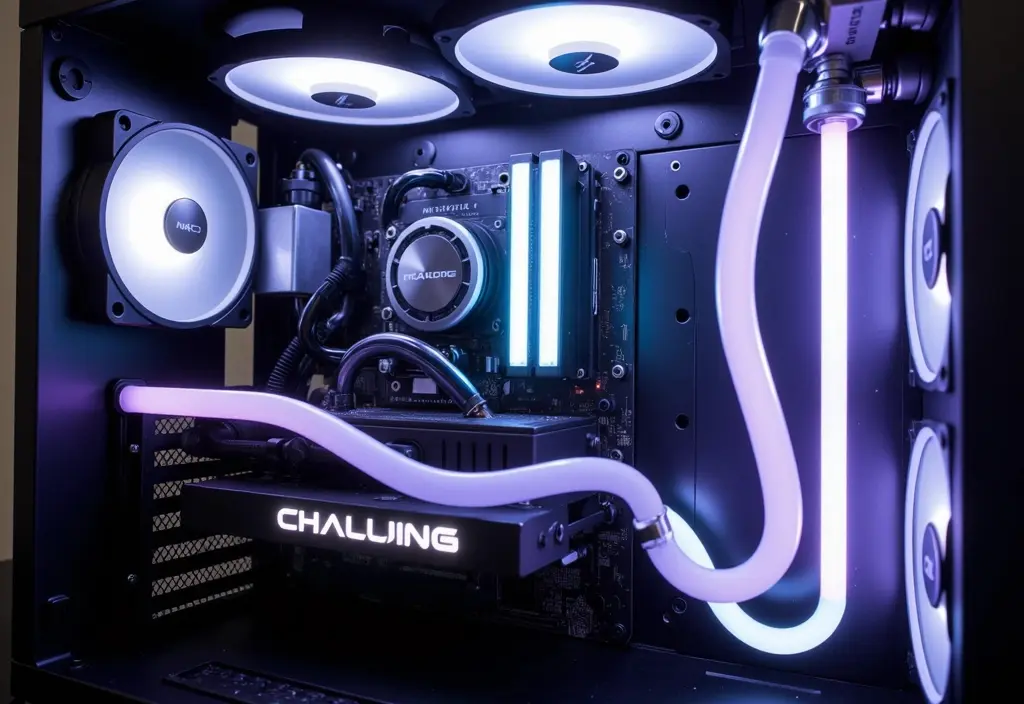
Is noise level an indicator of cooler performance?
Not necessarily. The best coolers are designed for efficiency, using larger fans that spin slowly and quietly while providing effective cooling. Excessive noise from a cooler often indicates poor design or undersized fans working at maximum speed.
How do I determine if a cooler will fit in my PC case?
Check your case’s maximum CPU cooler height for air coolers and radiator support dimensions for AIO liquid coolers. Measure the available space before purchasing to avoid installation issues.
Does a larger CPU cooler always mean better cooling?
Generally, larger coolers can dissipate more heat due to increased surface area, but the best cooling performance depends on matching the cooler’s size and capacity to your specific CPU’s heat output and your PC case’s compatibility.
What are the main differences between air coolers and AIO liquid coolers?
Air coolers use metal fins and fans to dissipate heat, offering reliability and cost-effectiveness, while AIO liquid coolers use a pump, tubes, and a radiator to achieve superior cooling performance, especially for high-end CPUs, with a more sleek aesthetic.
Why is upgrading my CPU cooler important for gaming performance?
Upgrading your CPU cooler helps prevent thermal throttling, allowing your processor to run at optimal speeds during intense gaming sessions, leading to smoother performance and avoiding overheating issues.

